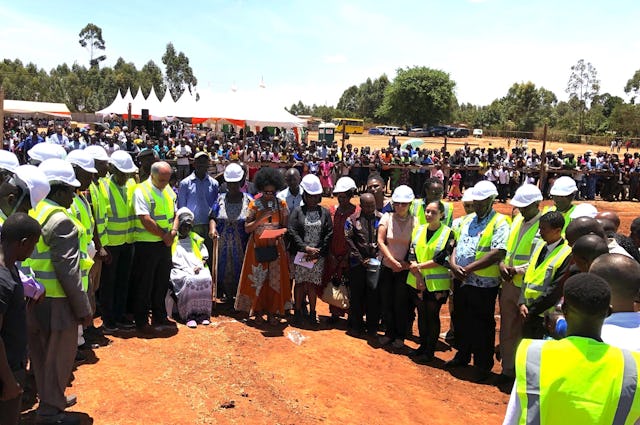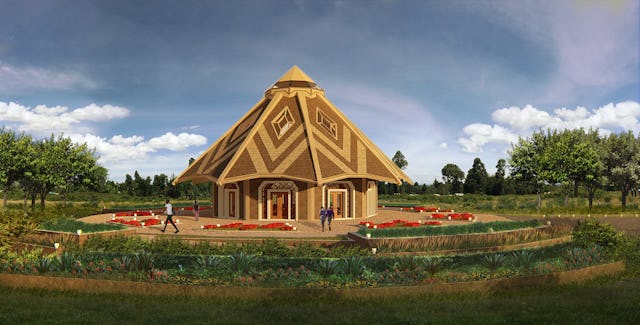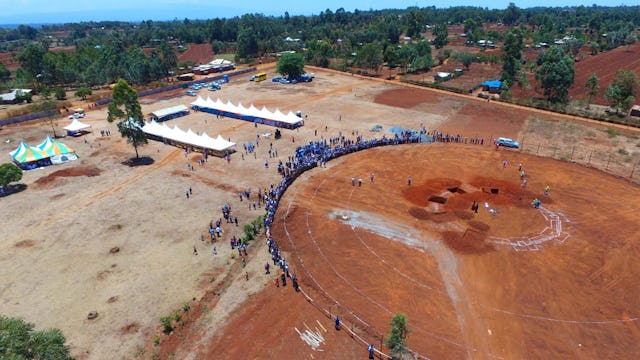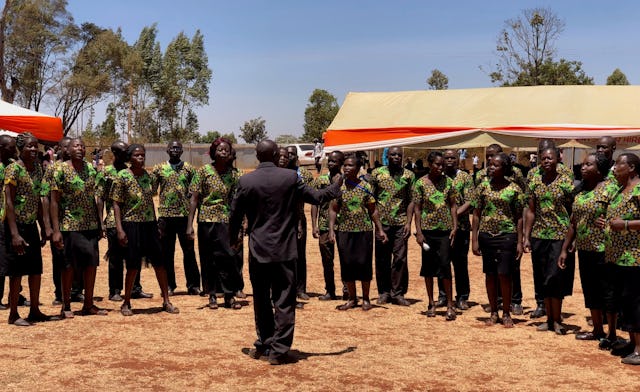Groundbreaking reflects unifying spirit of Kenya temple
MATUNDA, Kenya — A vibrant community in this rural part of Kenya gathered Saturday to witness the groundbreaking of the first local Baha’i House of Worship in Africa.
The site of the future Baha’i temple sits about 4 kilometers west of the town of Matunda, in an area surrounded by maize and other farms. Home to some of the earliest Baha’i communities of Kenya, the area known as Matunda Soy has seen a remarkable process of spiritual transformation take root in recent decades.
“The development of the first House of Worship in Kenya arises out of the hard work and sacrifice made in the path of service by the friends of the Matunda Soy cluster,” said Christopher Songok, a member of the Continental Board of Counsellors in Africa.
Participants in Saturday’s celebrations highlighted the unifying effect of the temple’s coming construction.
“I am excited that people from all religions are welcome to worship at the temple,” said Alice Juma from the nearby community of Lwanda.
“This ceremony is a truly spiritual event. I see this huge multitude—the young, the old, men and women all brought together in peace and obedience to almighty God,” expressed Peter Webonya of Matunda.
The joyous and unifying groundbreaking was held just two days after the Baha’i new year, Naw-Ruz, on a warm day. Attendees included local dignitaries, religious leaders, and visitors from around Kenya as well as Ethiopia, South Africa, Tanzania, Uganda, and Zambia. People began arriving Friday night, some by foot, others on motorcycles, cars, and buses, continuing throughout this morning, greeting each other with warm embraces and songs.
At the midday ceremony, a hushed crowd of about 1,200 people listened reverently to opening prayers. Then, Ruth Vuyiya, a much-loved Baha’i known affectionately as Mama Ruth, set the temple’s cornerstone on the red soil. Ms. Vuyiya was joined by her daughter, members of the National Spiritual Assembly of Kenya, construction contractors and the temple’s architect Neda Samimi. After the ceremonial groundbreaking, attendees celebrated the moment in song and ululations.
“The House of Worship has extraordinary significance in the community. It is the spot where noble souls offer supplication. It is a visible manifestation of the Lord,” Townshend Lihanda, another member of the Board of Counsellors in Africa, said.
The House of Worship will be embedded in the vibrant and dynamic community-building efforts, involving not only Baha’is but also embracing the greater community in the Matunda Soy area. “Baha’i community-building activities in a locality are an invitation to young and old, women and men, to recognize the importance of their spiritual life and to work towards nurturing it by acquiring qualities that help not only their individual growth but are conducive, too, to the development of the community as a whole,” explained Japheth Kokal, a member of Kenya’s National Spiritual Assembly.
The groundbreaking took place almost one year after its elegant and simple design, inspired by the region’s traditional huts, was unveiled at the same site. The design incorporates an intricate and expressive pattern that uses the diamond shape, a familiar motif in Kenyan culture. Exposed roof beams punctuating the nine sides of the edifice will be drawn together at an apex skylight. Inside, the skylight will sit atop a Greatest Name symbol, and 250 people can be seated. The temple will be built from local materials.
In 2012, the Universal House of Justice announced plans for the construction of seven Houses of Worship. Two have already been built, the first in Battambang, Cambodia and the second in Norte del Cauca, Colombia. In addition to this temple in Kenya, two other local Houses of Worship and two national Houses of Worship are also in progress.



